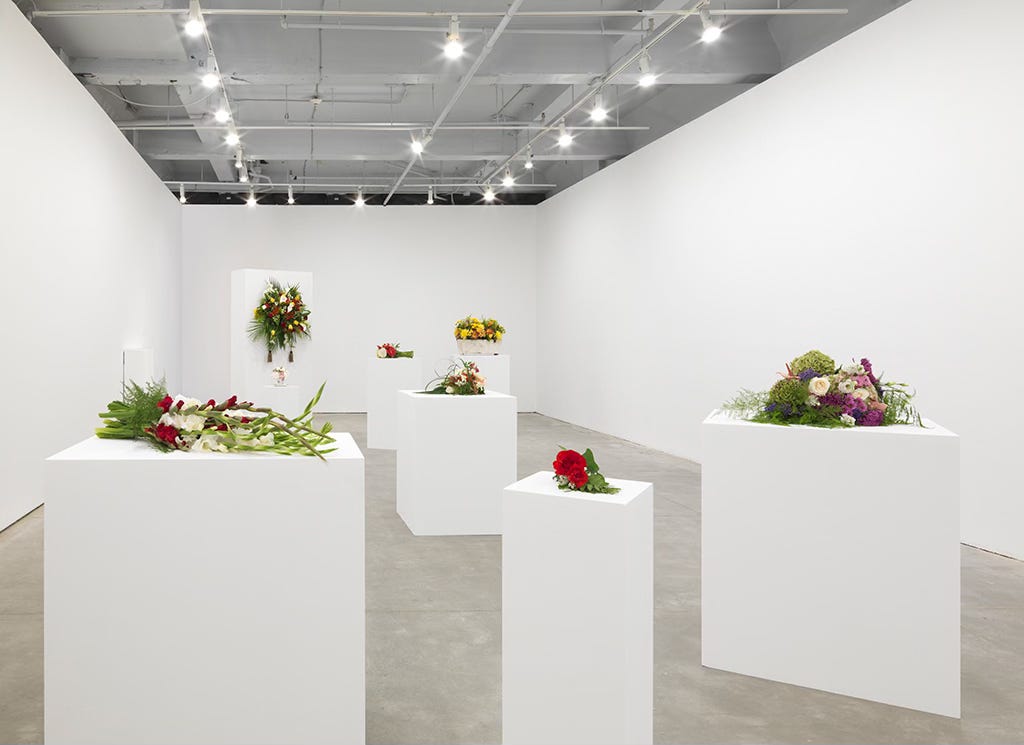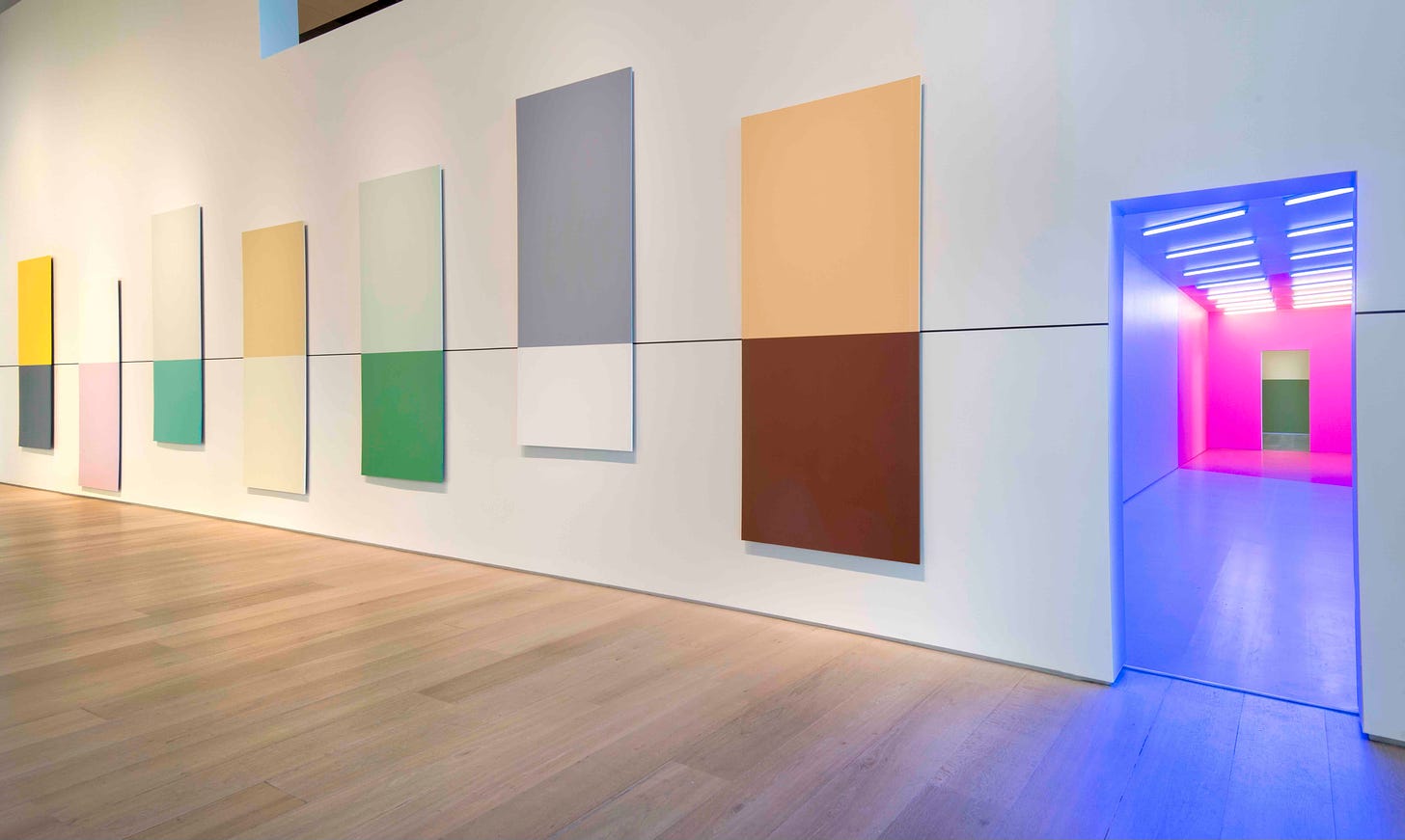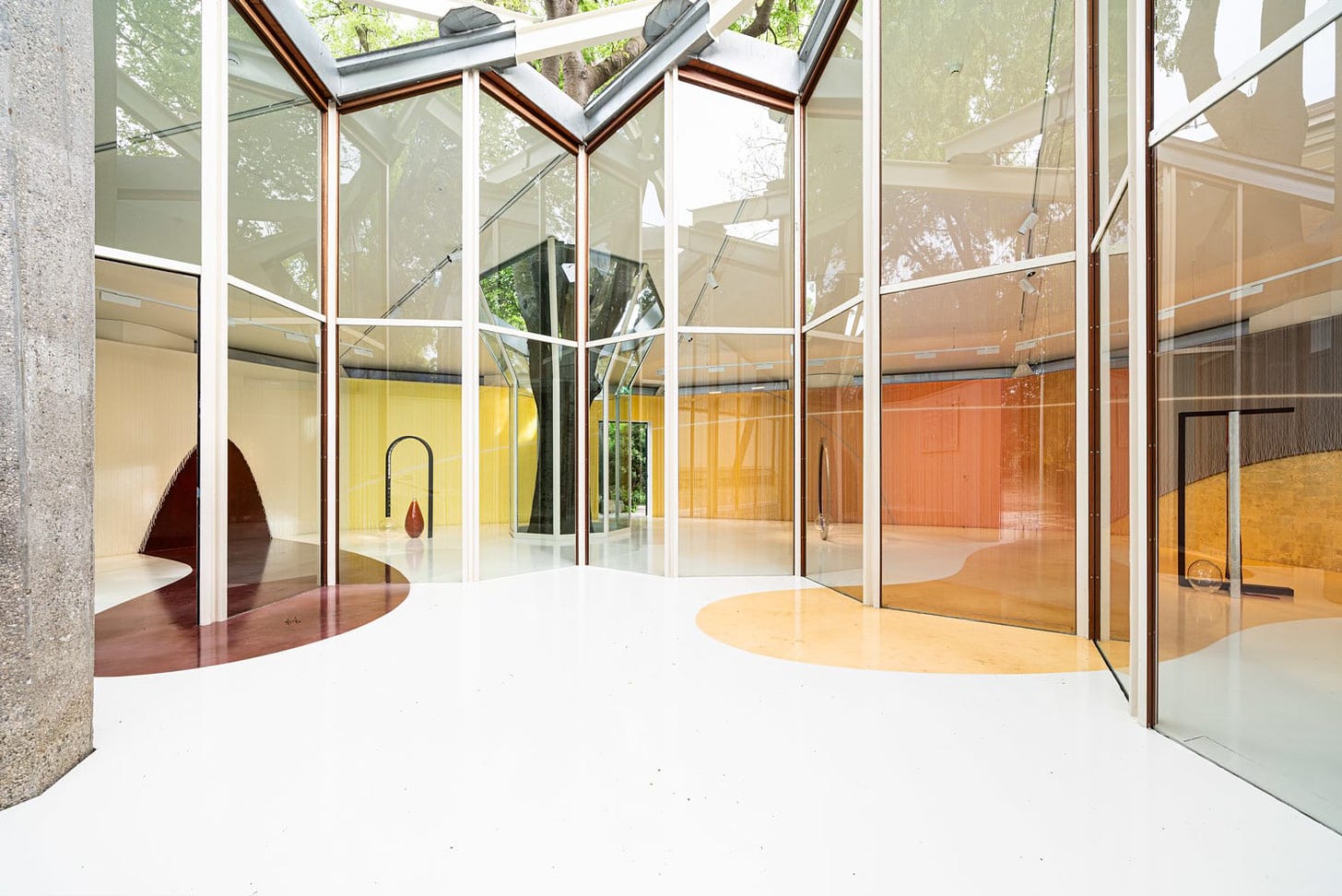The most-read Making & Meaning post this past year introduced the Canadian artist, Kapwani Kiwanga. The post was only fully available to paying subscribers but a lot of free subscribers appeared to read the preview. Clearly, something about Kiwanga and her work sparked a flurry of interest. In this post, I provide an update for all to read on Kiwanga’s latest exhibition, Trinket, now on view at the Venice Biennale.
First a little background. Kiwanga was born in Hamilton, Ontario and grew up in nearby Brantford, a city not far from Toronto. For university, she moved to Montréal where she studied anthropology and comparative religion at McGill University. Kiwanga then moved to Europe where she was involved in film-making. In 2005, she shifted her focus to visual arts and enrolled in a post-graduate program at the L’École nationale des beaux-arts in Paris. She followed this with another graduate program at Le Fresnoy in Tourcoing, France. As early as 2005, Kiwanga began exhibiting work in international group exhibitions and, by 2011, her work was presented in solo exhibitions around the world. By 2018, Kiwanga was being recognized with a number of prestigious art awards - Sobey Art Award (2018), Frieze Art Award (2018), Prix Marcel Duchamp (2020), and the Zurich Art Award (2022). Her work was also featured in Milk of Dreams, the central international exhibition at the 2022 Venice Biennale curated by Cecilia Alemani. Now, just two years later, she is back in Venice where she is representing Canada in its national pavilion.

Kiwanga has won these many exhibitions and accolades for her eclectic multi-media practice which includes performance, sculpture, installation, photography, and video. Each of her exhibitions is based on extensive research into a particular subject. In one exhibition, for example, Flowers for Africa (2012 to present), Kiwanga researched the de-colonization of African nations. For this on-going exhibition, she reproduced the cut-flower arrangements that are pictured in photographs of the diplomatic events that accompanied the independence celebrations. The flowers are presented on white pedestals in a white gallery space and allowed to wilt through the duration of the exhibition.

In another example, Kapwani Kiwanga: A wall is just a wall (and nothing more at all) (2018), Kiwanga studied how hospital and prison architecture has been used to manage human behaviour. For the exhibition she created very minimal but colourful architectural installations that utilize what she learned about optimal colours and lighting for preventing or encouraging certain behaviors. One installation is simply a space bathed in pink and blue florescent light while another gallery features a series of painted drywall panels bisected by two different colours. The panels are hung so that the dividing line is set at the recommended height for wall painting in hospital corridors.
Over a period of about ten years, Kiwanga has tackled a whole range of subjects and, using her research, she has explored the power dynamics behind objects and events in our contemporary world. Many of her works are site-specific in that she aims to address the “historical, political, and cultural spaces that envelop” a specific location.1 As she explains, “with my work, I am trying to understand how power structures are created, through legislation, through urban planning, even through the use of color.”2
Trinket is a good example of how Kiwanga marries her research, the location of her project, and the histories of her materials in her artistic practice. Her venue, the Canadian Pavilion in the Giardini, is an unusual structure. Unlike other pavilions at the Biennale, the architects eschewed the usual neo-classical box for a helical structure of wood, aluminum, and glass.3 To complicate the space even further a tree grows up in the middle and is enclosed by a glass wall. Needless to say, the pavilion makes art exhibitions a challenge. There are few walls for hanging paintings and too much light for displaying video or film. Most of the artists who have won a commission to represent Canada have ended up trying to make the space conform to their needs by covering the glass walls and darkening the interior.
With Trinket, Kiwanga has embraced the unusual structure of the pavilion and made it an integral part of her artwork. She has uncovered the glass walls on the façade which not only lets in more light but also opens the interior space to the outside. Approaching the pavilion, Kiwanga’s exhibition is in full view creating what curator, Gaëtane Verna calls a “large-scale tableau.”4 Outside the pavilion, a veil of blue seed beads is draped over the entrance of the helix, and inside more strands of glittering beads cover the walls. Several sculptures, some made of glass and others that incorporate even more beads, are placed on the floor throughout the space. The interior tree, encased in glass, appears to fit comfortably in Trinket’s colourful and shining display. Taken as a whole, Trinket transforms the Canadian Pavilion into a large-scale sculptural installation that can be experienced from both inside and outside.
If, like me, you are unable to attend the Venice Biennale, here is a video produced by VernissageTV that does a very good job of recreating what it might be like to walk through the exhibition.
The aesthetic experience of Trinket is easily discerned even if one is only relying on a virtual visit or photographs. Like her other projects, such as Flowers for Africa and A wall is just a wall, Kiwanga creates visually appealing installations, but her in-depth research is not so readily apparent. Instead, like so many contemporary art exhibitions, Kiwanga’s work depends on extraneous texts – a didactic panel or exhibition essay – to inform the viewer of the historical, social, and cultural issues that she has explored in her research and tried to convey in the work.
The meaning of Trinket, and the research behind its creation, is explained by an information panel at the entrance of the Pavilion and by a small booklet, Kapwani Kiwanga: Trinket. The booklet includes an “Introduction” by curator, Gaëtane Verna and a short essay, “Venetian Seed Beads: A Global Commodity that Changed the World” by Karin Pallaver. In the “Introduction,” Verna explains that seed beads, known in Italy as conterie, have been made in the glass factories on Venice’s Murano Island for centuries. As early as the sixteenth century, the beads were “employed as both currency and items of exchange.”5 As Europeans travelled the globe, the beads were introduced into different cultures. Anyone from Canada, for example, will recognize these beads as the “trinkets” that European settlers traded with the Indigenous people. The beads became, and still are, an important medium for artistic expression in many Indigenous communities.
As the primary material in Trinket, the seed beads are key to the meaning and import of Kiwanga’s research and installation as Verna explains;
Seed beads become the conduit through which Kiwanga unravels the complex interplay of trade, power and cultural transformation. The installation addresses the often-destructive history of commerce, yet pushes further, asking viewers to consider how the trade of these beads for varied materials shaped our present world.6
The historical legacy of these tiny beads, as Verna describes it, is not easily discerned by visiting and looking at the exhibition. One must read the text. Similarly, one needs to be coached about the significance of the fresh, but wilting, bouquets in Flowers for Africa or the significance of colour in A wall is just a wall. Exhibition texts, whether wall panels or catalogue essays, are not part of the artwork but play a crucial role in Kiwanga’s work all the same. They tell us, as viewers, what we are supposed to understand and value about the work. Once read, our experience of the intallation is permanently altered. We may be moved by the “seductive gleam of the tiny glass beads,”7 as one reviewer put it, but once we have encountered the texts, we see the beads and other objects, the location in Venice, and the presentation within the Canadian Pavilion, in a very different light.
Massimiliano Gioni and Kapwani Kiwanga, “Cross Currents: Kapwani Kiwanga in Conversation with Massimiliano Gioni,” in Massimiliano Gioni and Madeline Weisburg eds, Kapwani Kiwanga: Off-Grid (New York: New Museum, 2022), 13.
Massimiliano Gioni and Kapwani Kiwanga, “Cross Currents,” 25.
Gaëtane Verna, “Introduction,” Kapwani Kiwanga: Trinket (Ottawa: National Gallery of Canada, 2024), 7.
Verna, “Introduction,” 7. The National Gallery of Canada manages Canada’s Venice Biennale participation. You can read more about Kiwanga and her commission here.
Verna, “Introduction,” 8.
Terence Trouillot, “National Pavilions Review, Part 2: A Miasma of Despair and a Glimmer of Hope,” Frieze Magazine (April 17, 2024): https://www.frieze.com/article/venice-biennale-2024-review-national-pavilions-part-two.




